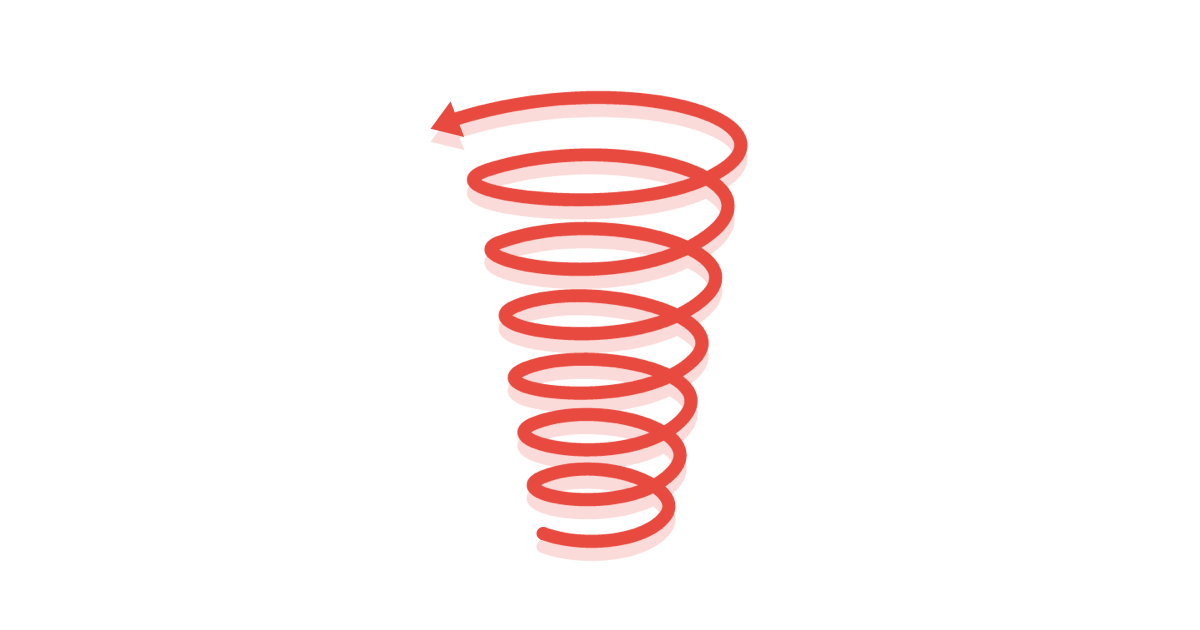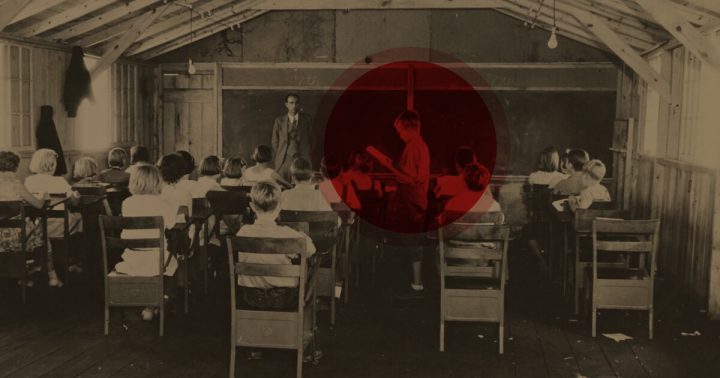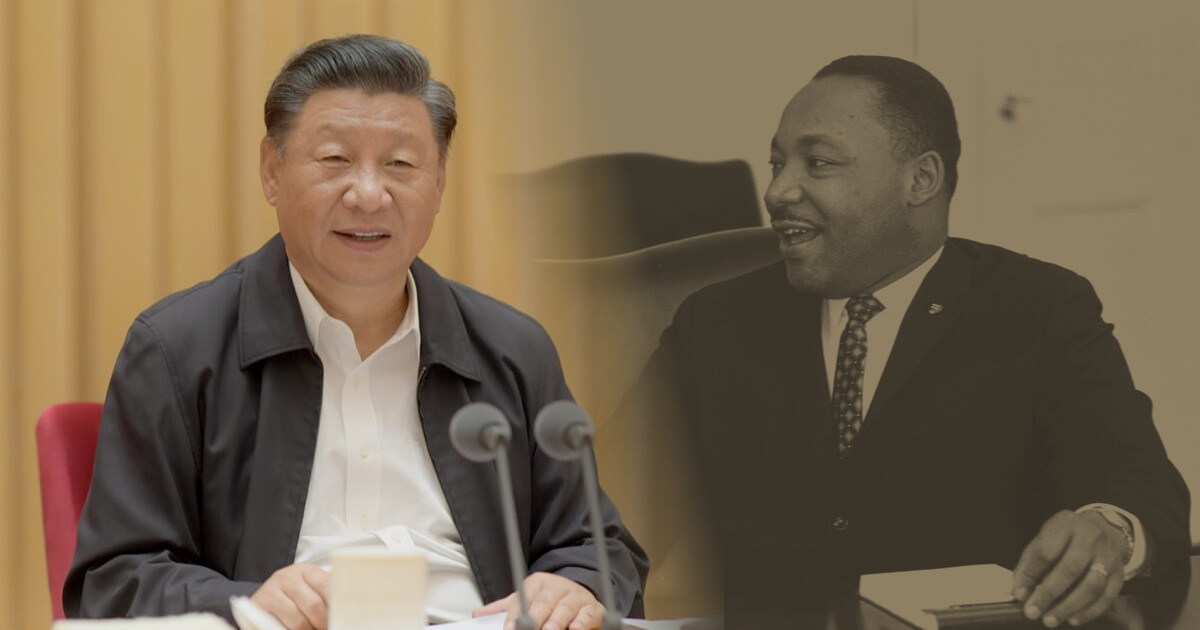The gulf we have experienced over the last half a century between the left and the working class in our country is a problem that my comrades and I have been trying to grapple with over the last few years of organizing. The flaws we have observed in the dominant left-wing spaces of our country culminated in our efforts to create Midwestern Marx over a year ago – an eclectic project wherein through collective and interdisciplinary discourse we attempt to overcome some of these flaws.
For this discussion, I wish to focus on the three central flaws we observed in the dominant socialist left. I would like to preface that although we considered, and still do, these three flaws to be dominant, we nonetheless do not claim that it effects all organizers or organizations to the same extent. These flaws, although dominant, are not absolute.
I would also like to preface that I will be using ‘left’ as a broad umbrella term for anything from Bernie Sanders social democrats, democratic socialists, and communists of various kinds. However, I will divide the classification of the three flaws into two categories – those which fall under right-wing deviationism and those which fall under left-wing ultraism.

De-centralizing the Working Class
The first flaw is the de-centralization of the working class.
I encountered the nakedness of the first flaw in my time organizing for the Bernie Sanders presidential campaign in 2020. There was a constant tension between the efforts of my comrades and I to canvass in the working class and lower income neighborhoods in Dubuque, Iowa, and the demands of the Bernie staff, which chose were to organize not based on the class position of the individuals, but previous voting records. To be fair, this is not a complaint of the specific staff members – many of these folks were sympathetic with us, they were merely following the orders from above. The result, however, was that we were being sent into petty bourgeois and professional managerial class neighborhoods because these folks had a record of voting ‘democrat’.
Here I encountered the stark reality of a socialist campaign which under the banner of making a political revolution had no space in their revolutionary praxis for class analysis. The organization of the working class was not their priority, getting votes was. Hence, the universalist fallacy of the bourgeois theorist was replicated in their socialist praxis – we were all ‘voters’, not concrete individuals with different relations to the mode of production and the apparatuses grounded on these.
The instances in which the working class was emphasized, the concept itself was broader, and subsequently vaguer, than it was decades ago. The working class was understood through the lens of the Occupy Wall Street bifurcation of the 99 versus the 1 percent. It was understood, in essence, in terms of income. This understanding of class is only quantitatively different than the general liberal understanding of class as income categories – the liberals have various brackets; the socialists have two. Either way, it was a departure from the traditions of communists, socialists, and anarchists in our country who found a meeting place grounded on a shared Marxist understanding of class as a group’s relation to the means of production.
The diluting of the concept of the working class has its roots in the general composition of the left. We must ask, if the left and the working class are severed, then what is the class composition of the left? I have not seen any sociological study done on this, at least not one with an understanding of class appropriate for our dilemma. However, from personal experience I dare to say that a great part of the left consists of academics and students, and on the other hand, the greater lumpenized mass of what constituted once the working class, but which has been reduced to precarious forms of work thanks to neoliberalism’s Walmartization of labor. These precarious workers, who usually occupy positions in the service industry, although part of what we have called the ‘working mass’, have a fundamentally different relationship to the working class which engages in the direct moment of production, and from whose extraction of surplus value the subsequent moments of distribution, exchange, and consumption, are maintained. The working class, as such understood, serves as the point of departure and as the condition for the possibility of the work done in the greater parts of the working mass whose labor exists in post-production moments in the circulation of capital.
This is not to say that this larger group of the working mass is not exploited, oppressed, and facing the wretchedness of today’s capitalism. Further, this distinction between working mass and class does not mean the former are not necessary for a revolutionary movement. Revolutionary movements, although spearheaded by a particular class, require the involvement of classes with shared interests – or at least non-antagonistic relations – to the class leading the revolutionary movement. In the Marxist tradition at least, the working class is posited as the revolutionary agent not because they are the most oppressed, for Marx often comments about how sectors of the peasantry live in greater wretchedness than many parts of the working class; instead, the working class is posited as the class with universal emancipatory potential because of its relation to the capitalist mode of production, that is, because of what makes it the ‘working’ class. It is this class which, because of its position in the contradiction between the relations and forces of production, can burst asunder the integument of capitalist production.
For the existing left this class, as it is understood in the Marxist tradition, no longer exists – the individuals which de facto compose it are merely a part of the 99%. This blurs any understanding of the pressure points of capital, and hence, of which sectors of the working mass sustain more power against capital than others. Because of the left’s inability to organize this class, the natural periodic cycles of crisis and popular dissolution have led this class to express their systemically rooted discontent via right-wing pseudo populism which diverts that revolutionary instinct towards reactionary ends. Then, after this class turns towards reactionary sectors because of the absence of a working class grounded left, they immediately become unorganizable and get tagged with the fascist badge so often handed out by the left today. This is a recipe for more of what we’ve had in the last 50 years – failures.
If the left wishes to remove the gap that separates it from the working class it must first regain the Marxist understanding of class, and then regain the patience which allowed them once to organize individuals with imperfect views and to fix these imperfections in the process of collective class struggle. Further, it must move away from a new-left pessimism which drags along the incorrect judgement that the comfort American capitalism has created for workers has made them revolutionary futile. This wasn’t just wrong when preached in the 60s, but today, after the neoliberal tick has drained the century long struggled-for gains of the working class, holding such a view is delusional. This is the first component in need of rectification to reclaim a position as a substantial threat to American capital.

Pro-Imperialist Socialism
The second central flaw we observed in the leading socialist movement was its pro imperialist stance.
As with the first flaw, I encountered the second one in its utmost nakedness in the DSA, Haymarket, and Jacobin sponsored 2019 Socialism conference in Chicago. Here I found self-proclaimed socialists panelists condemning the ‘so-called’ authoritarianism of socialist countries like China, Cuba, Venezuela and Nicaragua. I remember the disappointment my comrades and I, then working within our local DSA, felt upon hearing this. It was a blatant internalization of the state departments narrative, used and abused so often to bring havoc upon countries who chose a path that deviates from the interests of American imperialism. Shortly after we encountered a report from the Grayzone’s Ben Norton and Max Blumenthal which showed the pro-imperialist panelist speakers had received aid from various state department agencies, including the notorious Reagan founded new arm of the CIA – the National Endowment for Democracy.
Although I hoped these destructive, state-department touting tendencies were merely within these few corrupt spokesmen, the reality was this wasn’t the case. Instead, the positions they expressed on socialist states were generally accepted by most on the ‘left’. The crowd seemed to be acceptant of it, and the organizations that sponsored the event clearly were too. We thought to ourselves, how can anyone be a socialist if they genuinely think each time a socialist or communist party has been in power, it has resulted in great failures? What sort of arrogance is required to claim that everyone in the third world has failed at socialism, but we, the virtuous West, we are the ones who will succeed!
This phenomenon, which has been funded and promoted by the US state department since the cold war – so much so that it has virtually dominated the ‘left’ of the last 50 years, – I identify in my work as the western left’s “purity fetish”. This means that western socialists in general, and American socialists in particular, have had their assessment of socialism determined by the Parmenidean metaphysical understanding of the true as the one, pure, and unchanging which has dominated western thought since ancient Greece. As a consequence, when a successful socialist revolution is forced to take certain measures to defend itself from the counterrevolutionary forces of their national owning classes and the alliances they make with imperialism, the western left touts the slogans of a socialist betrayal, and the cries of authoritarianism arise. As soon as a country encounters the necessity of using force to protect its popular revolution, these measures break with the purity of the western left’s conception of socialism, and henceforth, lead to its rejection and to the left’s internalization of the empire’s narrative.
This flaw will be overcome when the left breaks with this metaphysical lens and embraces a dialectical method of analyzing a dialectical world. Here they will see that purity is non-existent; that all things must desecrate themselves and tarry with their opposites to overcome the contradictions that arise; that the quantitative and qualitative expansion in democratic life brought about by socialism must be united with the dictatorial measures necessary to prevent the counterrevolutionary forces from coming into power and overthrowing the gains of the revolution. This is not a betrayal of socialism; this is the natural course it must take in a world still dominated by capital. Once the left understands this, they’ll be able to remove the blinders which have prevented them from seeing the immense successes socialist experiments in the 20th and 21st century have brought their people, and hence, they will be able to show this to their national working masses who are in dire need for similar gains.

Communism as Death to America
The third flaw we observed in today’s left is an attitude which argues that the goal of the communist movement in our country is the abolition of America. This flaw is conjoined with their favorite slogan: “death to America”.
Whereas the previous two flaws emerge from the social democrat or democratic socialist flank of the left, this flaw arises as a reaction to the right-wing deviationism of the former and is characterized by its ‘ultra-leftist’ positions on issues concerning the national movement towards socialism. This is predominant in various Maoist, Third Worldist, anarchist and even some Marxist-Leninist spaces.
As with the case of the purity fetish, what we have here is a deficiency in dialectical thought. The American experiment is understood one-dimensionally, that is, the US for them is reducible to its history of settler colonialism, genocide, enslavement, and imperialism. Although this is definitely the history of the owning classes and their bourgeois state, this is not the history, however, of ALL of America. In the underbelly of this history lies its opposite – a long, arduous history of struggle against the various forms of exploitation and oppression of the former. This is the history of figures like Thomas Paine, Thomas Skidmore, John Brown, Frederick Douglass, Daniel DeLeon, August Willich, Eugene Debs, Bill and Harry Haywood, Elizabeth Flynn, William Foster, Martin Luther King, and thousands more. This is the history, further, of the abolitionist movement, of the workers movement, of the suffrage movement, of the various socialist, communist, and anarchist organizations that emerge in the late 19th and early 20th century. This is the history, in essence, of the struggle against capital, the state, and the various tactics used to keep the working mass divided among race, sex, and other factors which hinder the collective class struggle.
An honest glance at our history will help one recognize that the country has been composed of a unity of two opposed struggling poles – one which fights to defend the interests of the accumulation of capital, the other which seeks to defend the interest of working and oppressed peoples. The history of those who have fought for socialism, peace, workers’ rights, indigenous, black, and women’s rights, is not a separate history which stands outside of America fighting against it. Instead, this history is an immanent extension of the injustices that have permeated our country. The folks who partook in these struggles, in their great majority, saw themselves as the real representatives of the American people and of the American values of life, liberty, pursuit of happiness, sovereignty, and the right to revolution. They saw themselves as taking the progressive side of the revolutionary tradition to socialism, its practical and logical conclusion. They were not ‘Anti-American’ or working under slogans such as “death to America”. They saw the owning classes, their state, and the various bourgeois apparatuses as the real anti-Americans, as the ones who keep our population alienated, exploited, and oppressed while periodically sending them to wars abroad, were they lose limbs and lives to fight people whom they have more in common with than those who sent them to war.
If this tradition is forgotten, we will be doing the owning classes a favor – for this is what they’ve done to the tradition in the history books taught in our schools, it has either been erased, or, at best, whitewashed. If we ignore this tradition, we tear the historical legs off the socialist movement and yield to what McCarthyism has been erroneously propagandizing the American working masses to believe – namely, that socialism and communism are foreign and antagonistic to America. No working-class person will support a struggle which aims at bringing about the annihilation of their country. They would, however, support the sublation, i.e., the overcoming, of our present bourgeois state by a workers state. This is how our dialectical materialist tradition understands qualitative change – not as a full-fledged annihilation, but as the partial cancelation and partially metamorphosed preservation of the old into the new.
Only if we are historically honest about the deep and rich traditions of socialism in the US, and of the roles it has played in securing the programs and comforts our people enjoy the most – and those they enjoyed before neoliberal rollbacks – only then will our working masses be able to identify themselves with the socialist project. Only then will the truth emerge, affirming as the famous saying goes – that socialism is as American as apple pie.
Conclusion
In the US, the objective conditions for revolution couldn’t be any riper. We are seeing the decline and delegitimation of the empire, the global shift of power to the socialist east, the intensification of capitalism’s periodic crisis via a global pandemic, rising levels of national discontent and political dissatisfaction, and millions of workers who’ve dissented via strikes and en masse quitting. All that is missing for the activation of this objectively revolutionary potential in our masses is their organization along class conscious lines. The precondition for this, I have argued, is the rectification of the left’s three central flaws presented here.
Republished with permission from Midwestern Marx. This article is an elongated transcript of a lecture presented at the Platypus Affiliated Society Panel: “Class and the Left”. Photo: Pruitt Bridge over the Buffalo River, Hwy. 7 (CC BY-NC-ND 2.0) by ARDOT














